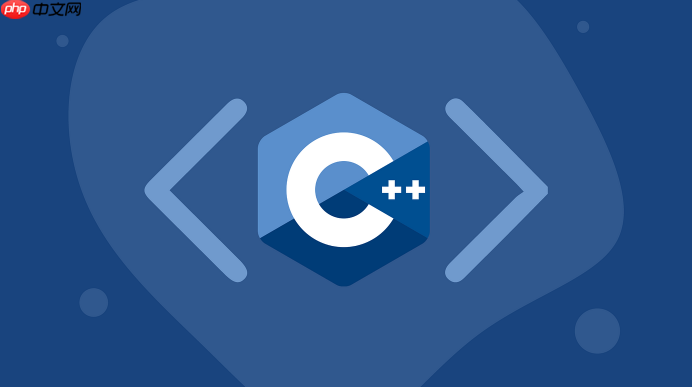
在 c++ 中,将二进制数据(如 字节 数组)转换为十六进制字符串是一个常见需求,尤其是在处理网络协议、加密、文件解析等场景。下面介绍一种清晰、高效且易于理解的实现方法。
使用 std::stringstream和 std::hex
最简单的方式是利用 std::stringstream 配合 std::hex 格式化功能,将每个字节转为两位十六进制字符。
示例代码:
#include <iostream> #include <sstream> #include <iomanip> #include <vector> <p>std::string bytesToHex(const std::vector<unsigned char>& data) {std::stringstream hexStream; hexStream << std::hex << std::setfill('0'); for (unsigned char byte : data) {hexStream << std::setw(2) << static_cast<int>(byte); } return hexStream.str();}</p>这里的关键点:
立即学习“C++ 免费学习笔记(深入)”;
- 使用 std::setw(2) 确保每个字节输出两位,不足补零。
- 将 unsigned char 转为int,避免被当作字符处理。
- std::setfill(‘0’)设置填充字符为 ’0’。
手动查表法(更高效)
对于性能敏感的场景,可以使用字符查找表避免流操作的开销。
std::string bytesToHexFast(const std::vector<unsigned char>& data) {const char* hexChars = "0123456789abcdef"; std::string result; result.reserve(data.size() * 2); // 预分配空间 <pre class='brush:php;toolbar:false;'>for (unsigned char byte : data) {result.push_back(hexChars[byte >> 4]); // 高四位 result.push_back(hexChars[byte & 0x0F]); // 低四位 } return result;}
这种方法直接通过位运算提取高低四位,查表获取对应字符,速度快,适合大量数据转换。
完整使用示例
下面是一个完整可运行的例子:
#include <iiostream> #include <vector> #include <string> <p>// 此处插入 bytesToHex 或 bytesToHexFast 函数 </p><p>int main() { std::vector<unsigned char> binary = {0x1A, 0xFF, 0x00, 0x4B}; std::string hexStr = bytesToHexFast(binary); std::cout << "Hex: " << hexStr << std::endl; // 输出: 1aff004b return 0; }</p>基本上就这些。选择哪种方式取决于你对性能和代码简洁性的权衡。标准流方法易懂,查表法更高效。实际项目中推荐 封装 成工具 函数复用。



